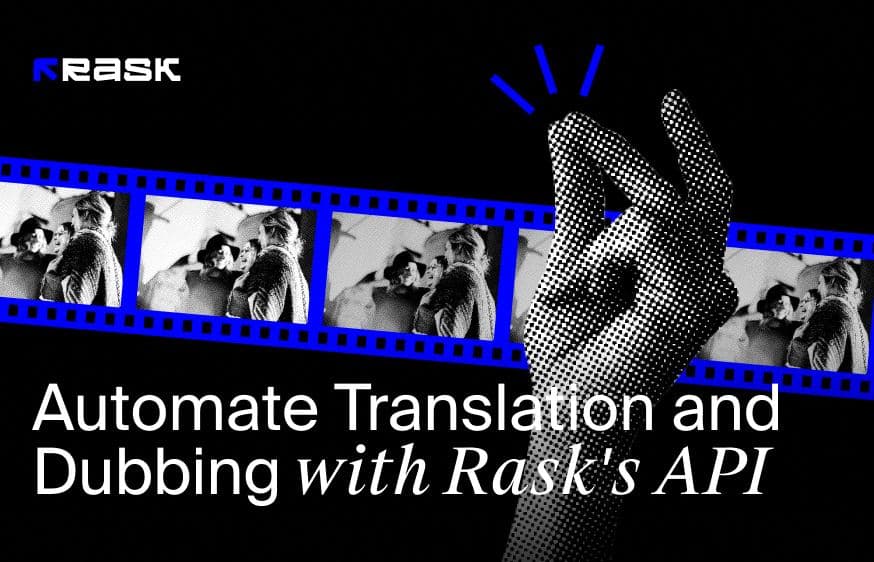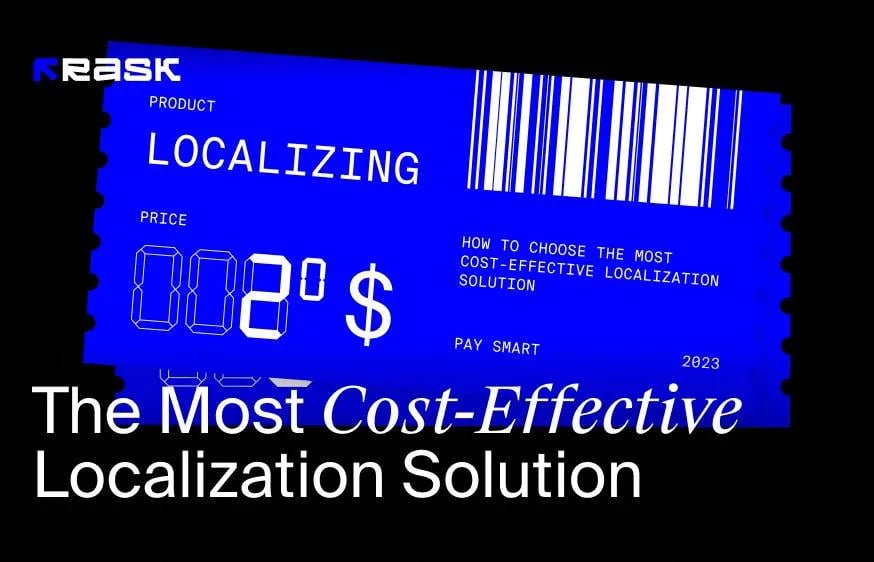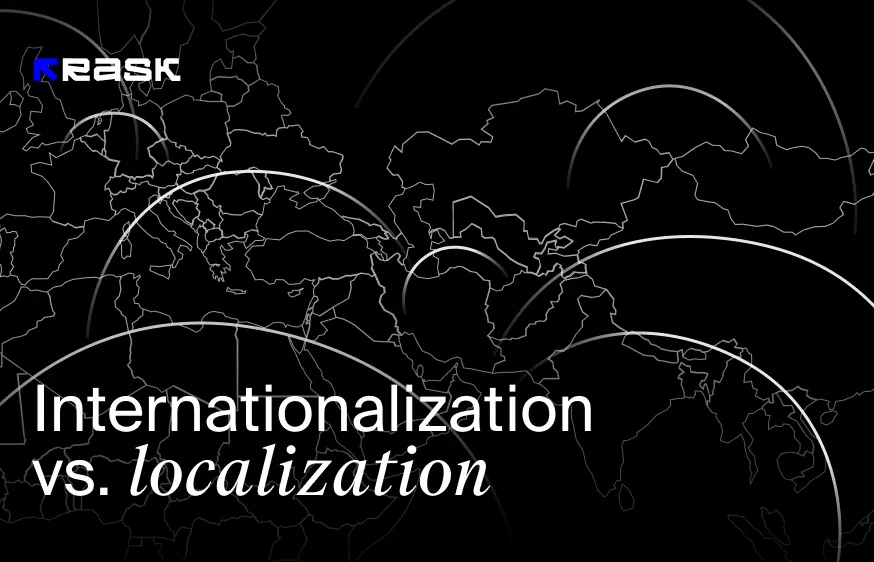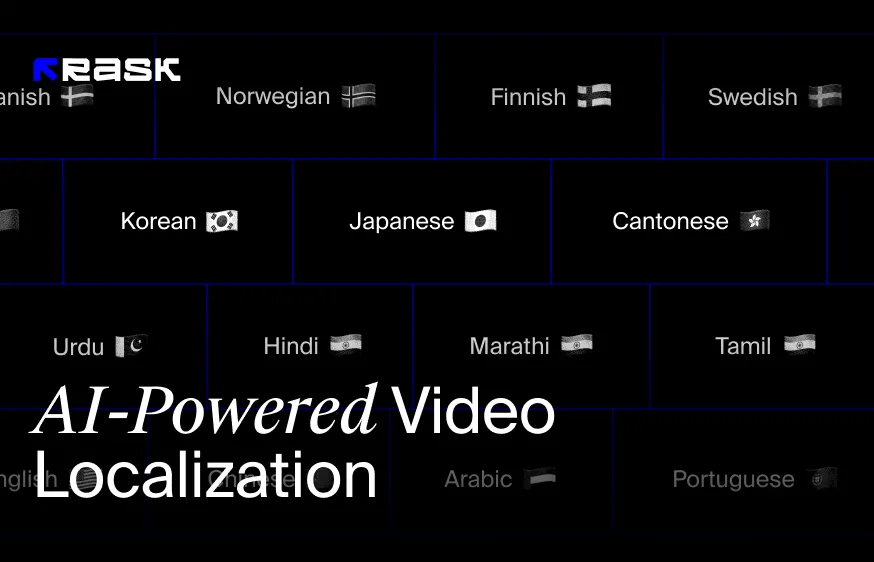什么是本地化?定义、优势、示例、技巧
试想一下,如果您是一名游客,来到国外(例如波兰),却对这个国家几乎一无所知。因此,我们的方法是从手机设置(语言和货币、日期和时间格式)开始,根据您的个人情况调整所有选项。
本地化将成为您所谓旅行的助手,您可能有能力适应这个国家的生活节奏。
因此,我们将在这篇文章中回答有关本地化这一数字概念的问题,具体内容如下:
- 本地化过程的基本定义;
- 使用这种技术有哪些好处和实例;
- 应用本地化的技巧。
什么是本地化?
本地化是指将内容的全部内容调整到一个新的地区,包括一些相关的图像、翻译和其他影响内容感知的元素,尤其是文化元素。
本地化原则在于给人留下某种印象,让人觉得你的网站是为该受众而创建的。完全本地化的内容会引起消费者的共鸣,因为它涉及到相关文化的细微差别,让人感觉是已知的,而不仅仅是用翻译文本替换英文单词。
本地化涉及内容的方方面面,尤其是内容的本地化:
- 用户界面:您的网站必须方便用户使用,在这种情况下,您需要根据不同国家的特点调整界面。例如,阿拉伯语是从右到左的语言系统,因此电子系统会适当改变网站页面的格式。
- 付款案例:除了以所需货币公布价格外,还需要注意软件付款处理系统和适当范围内信用卡的可用性。这一点对电子商务非常重要,否则,您很有可能会失去那些原本愿意与您合作并增加业务量,但却不懂外币或看不到他们所需的支付位置的客户。
- 带颜色的图片:有些标志或手势在世界各地会有不同的解释。例如,竖起大拇指的手势或表情符号图片在美国被定义为 "超级棒 "或 "干得好 "等高兴的意思,但在意大利和希腊则被定义为不祥的手势。
- 数字、度量、时间和日期格式:这些格式因地而异,甚至在同一种语言中也不尽相同。例如,在美国,日期的格式如下:"2023 年 7 月 23 日"。但在英国,同样的日期会这样写"2023 年 7 月 23 日"。
- 语言版本:翻译是本地化最重要的环节之一。将所提供的内容从源语言转换为目标语言的方法只是第一步。
- 信息和语气:本地化过程中要考虑到哪些内容会引起目标受众的共鸣,而不仅仅是技术上的正确性。在您提供的营销材料中,您的目标是说服客户还是教育客户?
如何征服目标受众或软件本地化的好处
很多人认为本地化是翻译行业的潮流词汇,其实不然。本地化的目的是将您所提供的服务或产品的内容适应新市场甚至全球市场,在这种情况下,这一过程就是全球化的一部分。
高质量的本地化旨在确保潜在消费者 100% 地感知您的品牌、选择和使用您的产品等。这是业务处理的一大能力。
然而,所谓的便利只是本地化的最大好处之一。
本地化的三大好处:
- 扩大客户群:如果您的目的是将您的产品和服务推向本地市场甚至全球市场,那么您需要根据特定的市场或地点制定考虑到消费者需求和文化的发展战略;因此,本地化技术不仅要考虑到客户群的需求,还要根据特定的地点调整网站的风格和语言;
- 无障碍推广:在任何一个新市场创业,都有可能面临各种障碍,如品牌不受欢迎、竞争激烈、产品销量有限等。正如你所理解的,市场的适应需要品牌在全球的本地化,因此其挑战在于根据目标市场的情况,从名称的翻译到最终产品的形状,都要考虑到产品的每一个细节;
- 公司的市场竞争力:竞争力的定义永远是相关的,而这一切都要归功于本地化管理平台。除了您的业务范围、经验和市场声誉之外,本地化还将帮助您超越竞争对手。
如何使用本地化技术管理各国母语的实例
我们希望通过网站本地化的真实案例来验证成功的工作原则。有一些使用案例:商业;软件。
业务:
- 肯德基团餐:通常情况下,品牌在进行本地化之前都会关注语言问题。在这里,肯德基在广告语中使用了不同文化的当地语言。以印度为例,因为这个国家对快餐连锁店的崇拜几乎没有发展起来。因此,使用当地语言再次成为抢占当地市场的最佳选择;
- 耐克:该品牌的广告活动取名为 "永远 100 美元及以下",并将其定位为以下品牌如何 始终获得目标受众满意的一个范例,即为每个系列投放各种类型的广告。耐克的广告活动成功地进行了本地化,以适应不同的形式和平台。因此,每个潜在消费者都能以这样的方式找到自己的一双鞋,而且百分百。
软件
- 谷歌公司:该公司每位专家的目标任务都在于创造用户体验,因此在开发任何产品时,工作人员都会努力将每个单元设计得方便、全面、信息丰富,同时也让人好奇,并用 70 多种语言向全球受众传播;
- Netflix 公司:需要强调的是,Netflix 团队在设计电影、视频和其他产品时使用的技术和工具包不仅要本地化,还要在每个地区进行翻译。随后,设计、应用程序、用户界面和语言都会发生变化。在为内容配音时,专业人员可能会使用最好的应用程序,如Rask AI,换句话说,它是一个完全帮助所有内容创作者和 E-learning & EdTech 公司进行视频翻译、配音和配音的工具,只需点击一下即可完成。
软件本地化应用程序的 8 大成功要素
- Rask AI服务:是内容创作者和企业的一站式工具,其目标是快速本地化视频,并开始与全球受众使用同一种语言;
- Smartling:是指一种基于云的翻译管理系统,可对某些企业提供生产和服务的应用程序和网站进行本地化,以实现实时协作、与各种平台集成等目标;
- POEditor 平台:这是一个翻译管理程序,可帮助本地化团队和软件设计师在开发产品的过程中,利用翻译自动化工具和与其他平台的集成,逐步开展合作;
- Phrase 应用程序:支持 60 多种编程语言和各种文件格式的软件本地化平台。此外,该应用程序还提供翻译记忆、上下文预览以及与众多顶级控制系统集成等功能;
- Lokalise 工具:Lokalise 被誉为协作式本地化平台之一,可帮助众多企业轻松完成翻译工作并管理每个软件项目。该服务还提供某种自动化功能、与一流开发工具的集成以及用户友好型界面;
- Crowdin "平台:这一应用程序的目的是帮助某些公司翻译每个软件及其项目,因为这一工具被视为基于云的本地化管理平台。使用该平台时,可以使用各种协作工具、与独特开发平台的集成以及自动翻译选项;
- OneSky 应用程序:这是另一款基于云的本地化工具,包含一个用户友好型界面和一些以开发人员为中心的集成;
- Transifex "平台:这一本地化工具的目标功能在于支持多种版本的文件格式和无障碍的控制系统集成。
管理本地化过程的方法提示
虽然管理本地化过程可能是一项复杂的挑战,但只要有完全适当的规划和组织,就能成功顺利地完成本地化工作。这里提供了一些关于如何在本地化过程中更循序渐进地进行管理的技巧:
- 提前规划流程:应主动启动项目中的本地化规划流程。不要忘记在初始设计阶段就考虑本地化需求,以避免各种潜在问题和日后的额外工作;
- 设定真正的目标:明确界定目标和本地化工作的范围。了解目标受众及其文化需求,有针对性地调整内容;
- 选择合适的工作人员:有必要选择经验丰富的本地化专业人员和翻译人员,他们必须会说当地语言,并在您的领域拥有专业知识。与声誉良好的本地化公司合作将大有裨益;
- 应用本地化工具:创新本地化管理工具,如 TMS(翻译管理系统)、CAT(计算机相关工具);
- 执行 QA(质量保证):必须提供健全的 QA 流程,审查本地化内容,以确保最大程度的准确性和各种语言的正确性,并遵循建议。校对员、专业语言学家和其他合作伙伴应执行这项任务,以获得最佳成绩;
- 编写词汇表和风格指南:设计全面的词汇表和风格指南,提供术语、语气和所有语言偏好的说明列表;
- 文化敏感性:了解所有文化的细微差别,调整内容以适应所有当地受众。这意味着要考虑图像、颜色、日期格式、计量单位等因素,这些因素在不同的文化中具有不同的含义;
- 提供上下文数据:需要向译员提供所翻译内容的上下文数据。上下文信息有助于他们理解文本背后的含义和目的,从而提高翻译的准确性;
- 明智地编制预算:为本地化进程预留具体预算。高质量的本地化可能需要一些额外的资源,因此要合理规划;
- 测试已本地化的内容:本地化流程完成后,继续进行语言和功能测试,以确保内容在目标语言中的外观和运行符合需要;
- 沟通与合作:在这方面,您的目标在于与本地化团队保持所谓的开放式沟通。及时向每个人提供反馈,让他们了解任何疑问,并尽量鼓励合作,以确保工作流程顺畅;
- 全天候改进:从每个本地化项目中学习,并将知识应用到未来的工作中。根据衡量标准和反馈意见,不断改进和完善本地化流程;
- 跟踪进度:应使用项目管理工具监控本地化进度。重点跟踪所创建项目的截止日期、阶段和成果,以保持领先地位。
常见问题
本地化过程意味着对服务或产品进行调整,以适应特定人群或语言文化的口味。成功的本地化 生产指的是刚刚在本地文化中发展起来的产品。
什么是本地化术语的另一种解释是,确定某物所处位置的项目。一些同义词:定位和定位。类型:回声定位、回声。
全球化是指为全球受众设计产品和内容的方法,要考虑到所有技术和文化方面的问题,而本地化的目标则是在翻译内容的同时,对实用工具的视觉效果和用户界面进行更详细的定制,并遵守当地现有的所有要求,从而使产品适应特定市场。
软件本地化被认为是使软件适应两种文化和语言的方法过程。这一过程可能涉及测量、图形和视频的标准。存在着影响消费者体验和软件形态的各种变化。
本地化是指在涉及大量图像、翻译和影响认知的各种文化元素时,尝试将内容对象修改为一个新的领域。本地化的表述是,你有一个网站 ,你在设计时考虑到了受众。

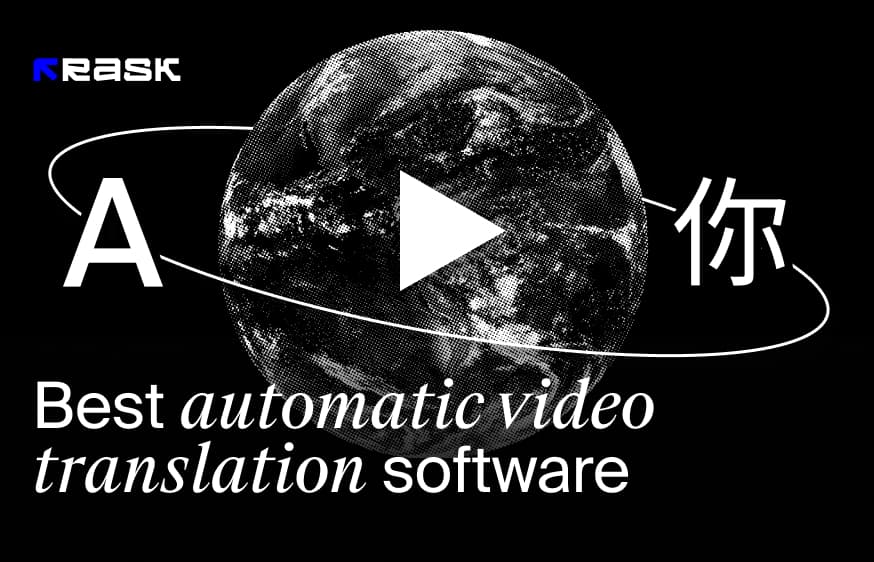




.jpg)
.webp)



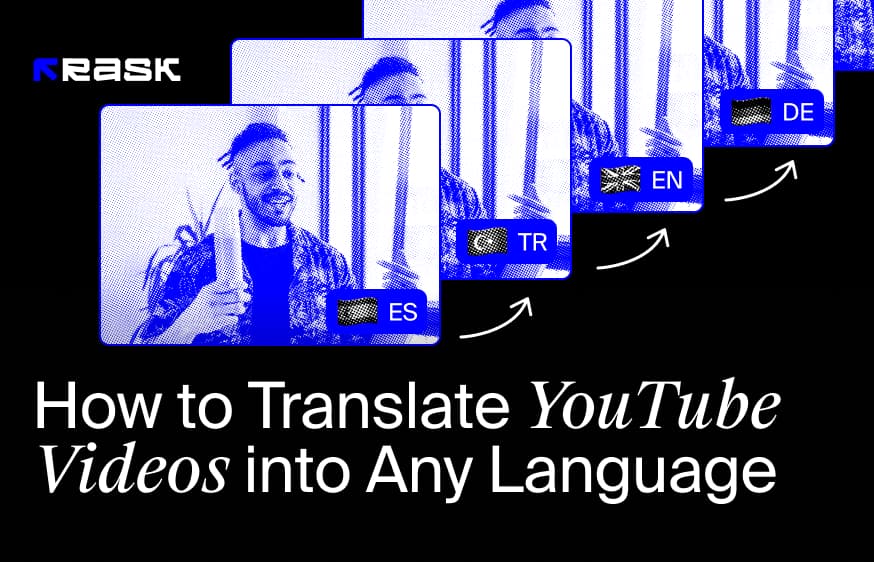
![8 款最适合内容创作者的视频翻译应用程序 [2024年]](https://rask.ai/cdn-cgi/image/width=960,format=auto,fit=scale-down/https://cdn.prod.website-files.com/63d41bc99674c403e4a7cef7/6668a3dcd3175bd1d1c73c81_Best%20video%20translator%20apps%20cover.webp)



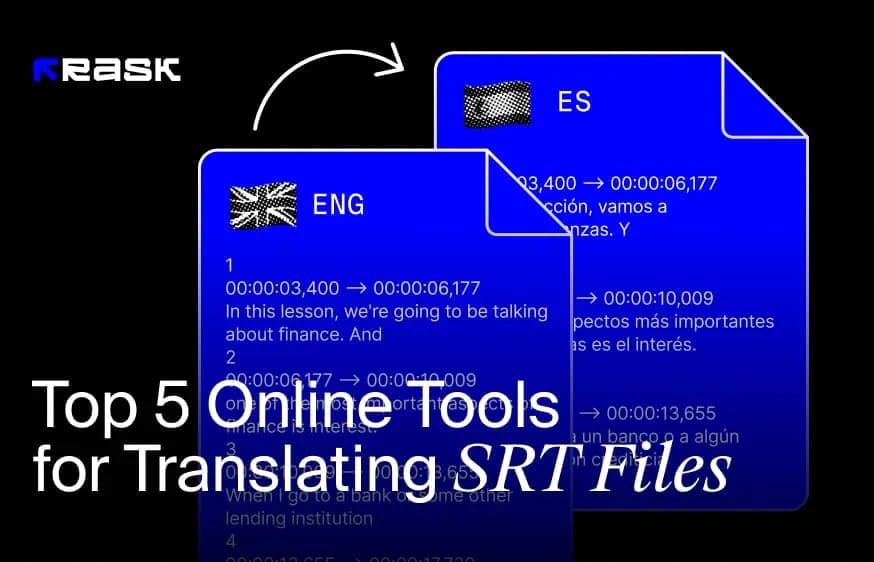

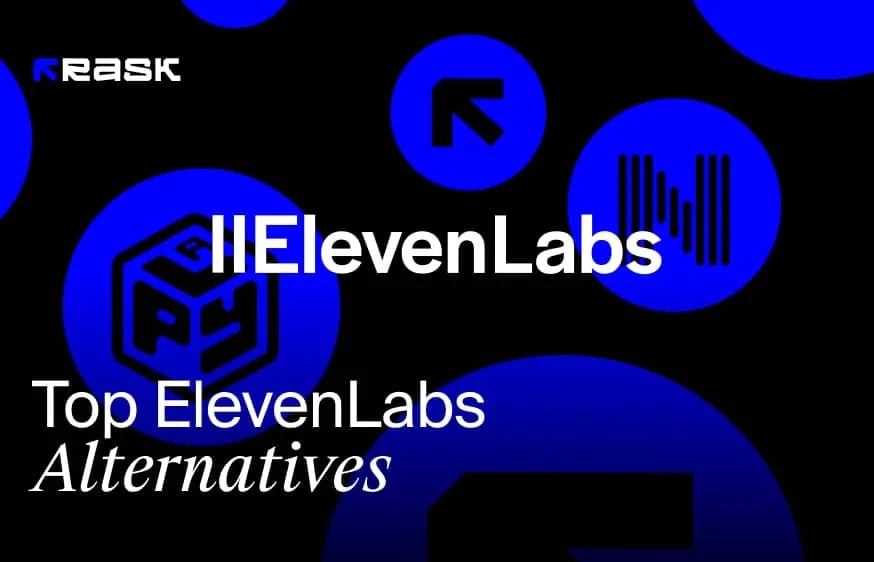
.webp)
